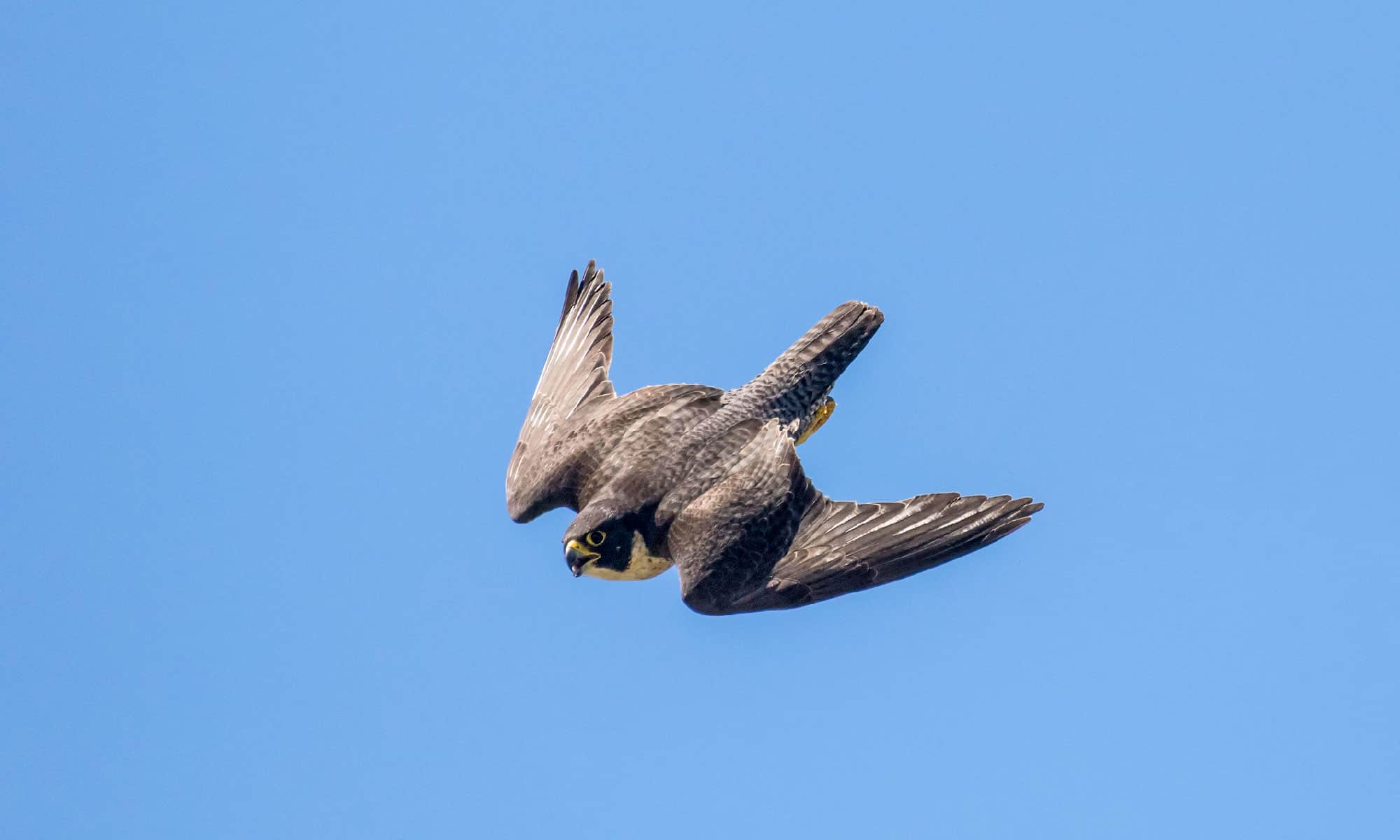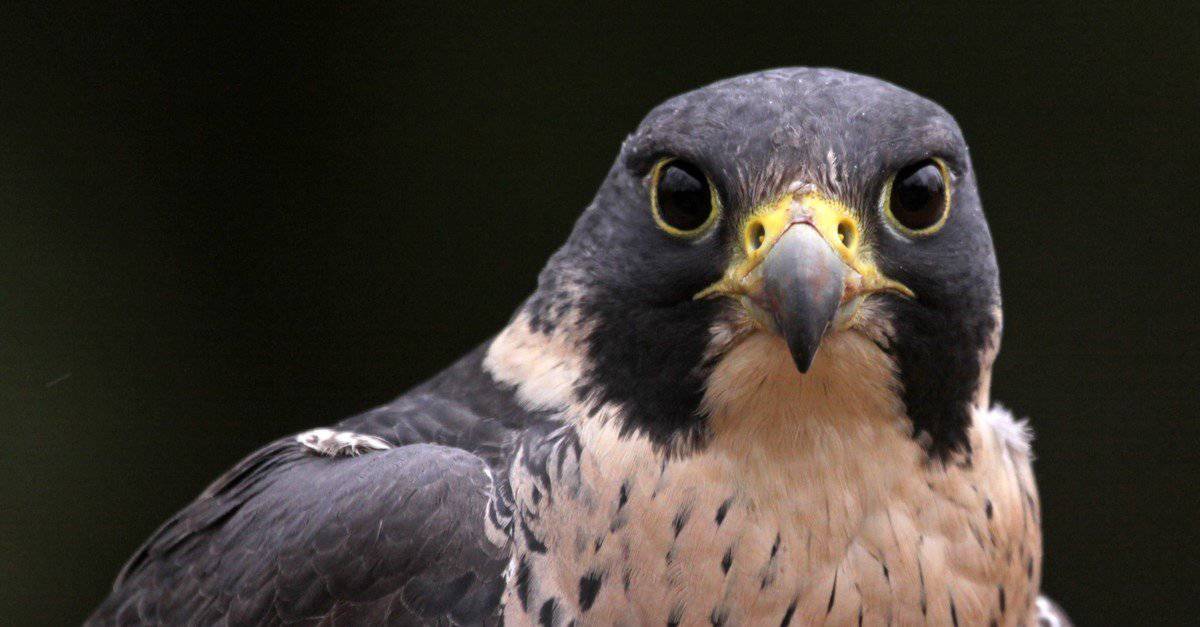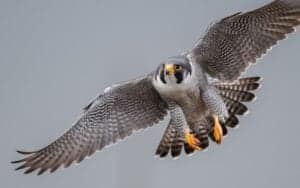Continue reading for our analysis...

Falcons are impressively fast birds (faster than all animals), much like the high-performance F-16 Fighting Falcon used by the Air Force — hence its name. Although the bird itself can’t compare to the speeds reached by the man-made fighter jets, the inspiration for their speed and agility remains.
Do Falcons Hunt Gulls?

Peregrine falcons are the fastest animals in the world.
©Harry Collins Photography/Shutterstock.com
Peregrine falcons are prized birds, with humans having trained them for hunting for well over a thousand years. These birds are extremely fast in the sky and can reach speeds of up to 69 miles per hour (MPH) when they’re after prey.
When they’re heading south, dropping toward their chosen prey, their speeds can reach up to 200 MPH. On average, however, they reach speeds of about 30 MPH.
These falcons travel through every continent throughout the world, except Antarctica. They feast mostly on other types of birds, including tiny birds like hummingbirds to bigger birds like sandhill cranes.
They enjoy a wide variety of prey, estimated to be about 450 in North America. Worldwide, that number looks more like 2,000. Gulls along with pigeons, ducks, and songbirds make up part of the list.
How Do Gulls Defend Themselves?

The peregrine falcon will use intimidation to chase away intruders.
©Chris Hill/Shutterstock.com
Peregrine falcons use intimidation as their preferred tactic, chasing away any intruders. They follow and swoop in at great speeds to ensure birds like gulls get the message that they’re not welcome. Gulls, on the other hand, are primarily social creatures. Though they may squabble and fight one another, they gather and use their strength in numbers to mob threats.
Mobbing is when gulls work together to radiate alarm calls and together, fly toward a predator to keep it distracted while reducing its power. Other defense mechanisms gulls use include vomiting or defecating on predators. A lone gull, however, does not have the strength gulls usually attain in numbers.
In this clip, you watch a peregrine falcon (trained by its human) push a gull around. The poster was carrying out bird control on a landfill site where several gulls had been staying. He managed to get other gulls moved off the site but had a bit of trouble with a stubborn gull. His peregrine falcon went right into the action, helping his human counterpart.
Throughout the video, you can hear the wind’s tenacity. He holds the camera steady and zooms into the sky, where you can see the birds flying. You can easily spot the falcon in pursuit of the gull as they both dip low to the ground and immediately fly back up high.
The man takes a few steps and you can hear his boots crunch the rocks as the falcon drops down to intimidate the gull.
Is It Normal for Humans to Use Raptors to Chase Away Pest Birds?

Gulls are among certain bird species that can become pests to humans.
©iStock.com/Evgenyi_Eg
Yes, it is. There’s a term for this practice–falconry abatement or raptor abatement. This practice involves using raptors as a wildlife management technique. Trained falcons or hawks are tasked with ridding areas of prey-birds that are viewed as pests. The raptors are trained to make repetitive sweeps across the area they are given to drive away birds such as gulls, pigeons, crows, Canadian geese, European starlings, or house sparrows. Reasons for ridding them of an area include overpopulation or being an environmental hazard.
The technique used by the trainers is called “lure-flying.” A bird-shaped lure containing food is swung before a trained falcon, which dives multiple times, unable to catch it, prompting it to fly a further distance, and then return for subsequent tries. This plays to a falcon’s natural hunting behaviors of making repeated dives at birds they would hunt in the wild. When a trained falcon is let loose and dives at these pest birds, they in turn, believing they are being hunted, flee the area.
Cities can become overpopulated with pest birds in winter, where birds congregate to keep warm, leaving behind an abundance of feces, thereby threatening humans with possible E. coli and other diseases. Pest birds can also cause problems for fruit farmers by consuming the crops they’ve grown for humans. These are some of the more detailed reasons why falconry abatement is a necessary strategy to control pet birds.
Other Amazing Animal Videos You Might Like
The falcon is not the only one that has amazing “flying” capabilities and spends time in the trees. When it comes to territories, it seems that there are many animals that will stop at nothing to get make sure they prove that they are the ones that belong. Watch this video to see a black panther battle a leopard for the ultimate showdown on who gets to claim the branch.
Thank you for reading! Have some feedback for us? Contact the AZ Animals editorial team.






